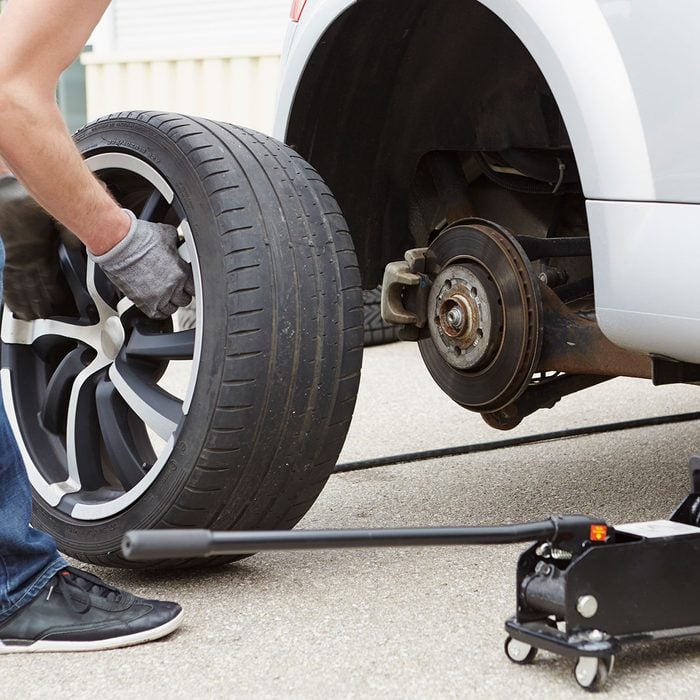How to Change a Tire
Updated: Feb. 02, 2024

Do you know how to change a tire? It's really not that difficult. Here are some tips that will make the job easier and safer.
Knowing how to change a tire on a car is an essential life skill. Flat tires usually come with little or no warning, and they can happen at the worst possible time.
There are also non-emergency scenarios where knowing how to change a tire can be incredibly useful. If your winter tires are mounted on wheels, think of the money you’ll save by swapping out your regular tires or rotating your tires yourself instead of taking them to a shop.
Whatever the reason, understanding the steps to changing a tire is must-have knowledge for anyone who regularly gets behind the wheel of a car.
On This Page
When To Change a Tire
A flat is the most common and obvious reason to change a tire. But there are others.
The wear and tear of the road gradually grinds down the depth of tire treads, making it harder for them to grip the road, especially in rainy or snowy conditions.
Once the tread of a tire wears down to 4/32 inch, slipping on wet or icy roads or even hydroplaning is much more likely. At that point, swapping out your most worn-out tires can go a long way towards staying safe on the road.
Tire Changing Tools and Materials
- Car jack;
- Tire iron or lug wrench;
- Spare tire.
Depending on the make and model of your vehicle, you may also need alignment studs, a wheel cover or lug nut wheel lock key and extension bars for the spare.
Checking spare tire pressure is the most neglected maintenance item on a car. A flat is not the time to discover your spare tire is underinflated or you can’t find the wheel lock key.
How to Change a Tire
If you get a flat while driving, turn on your hazard lights and proceed slowly to a safe, level location, visible from the road. Don’t stop just anywhere. A nearby empty parking lot is another good choice.
If you do stop on the side of the road, be sure you’re as far from traffic as possible. Leave your hazard lights on, turn off the ignition, place the transmission in Park (Reverse on manual transmissions) and firmly apply the parking brake.
Once you’re in a safe, secure location, follow these step-by-step instruction to change the tire:
- At the opposite corner of the tire being changed, jam some heavy object, 2x4s or a rock on both sides of the tire.
- Remove the wheel cover with the flat end of a tire iron. Some wheel covers have plastic trim caps that screw onto the lug nuts.
- Turning the tire iron or lug wrench counter-clockwise (remember lefty loosey, righty tighty), loosen the lug nuts about one-half turn without removing them completely. If they’re stubborn, lean on the tire iron or wrench with your foot for extra oomph.
- Position the jack under the vehicle, typically directly beneath the frame near the tire you’re trying to change. If unsure where to place the jack, check your owner’s manual.
- Crank the jack to lift the vehicle off the ground enough so the tire spins freely.
- Remove the lug nuts. Place them in the wheel cover or a container so you don’t lose them.
- Remove the flat tire and wheel by gently pulling it free from the wheel studs/lug bolts. Avoid shaking the car to keep it from falling off the jack.
- Mount the new tire and wheel on the wheel studs.
- Secure the lug nuts by hand as tightly as you can. Spin the tire to make sure the wheel doesn’t wobble and it’s flat and square against the wheel hub.
- Lower the jack until the tire rests on the ground, then finish tightening the lug nuts with the wrench. Be sure to tighten in a crisscrossing or star pattern instead of in a circle.
- As soon as each lug nut feels snug and secure, reattach the wheel cover if it fits the new tire. If it doesn’t, put it in your trunk with the flat tire and get to your mechanic.
